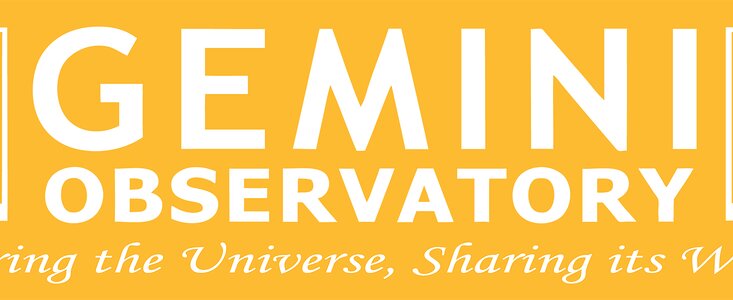Meeting Converges On Gemini Observatory’s Recent And Potential Scientific Impact
24 Abril 2012
In mid-July 2012, astronomers from around the world will converge in San Francisco, California to discuss recent and future science from the Gemini Observatory. From direct imaging of exoplanets, to the most massive black holes ever measured, the meeting’s program features a wide-range of topics that are summarized on the conference’s webpage (above).
“Our users are very creative and have come up with multitudes of simply amazing, and also unexpected, ways to use Gemini,” said Gemini’s interim director Dr. Fred Chaffee. “We expect a lot of discussions on the future of Gemini and what our users would like to do with Gemini – and we will be listening carefully,” Chaffee says. Planned sessions will gather information from users on the desired capabilities of future instrumentation and how the observatory can serve its users more effectively.
“This is a great opportunity for our user community to engage with us,” says Chaffee’s successor Markus Kissler-Patig, who will begin as Gemini’s director shortly after this meeting. Patig adds, “I’ll be there and my ears and eyes will be wide-open and looking for new ideas and directions that our users desire from Gemini.”
Highlights from the tentative program include: the latest results from current searches for exoplanets, and upcoming plans for using the next generation of “extreme” adaptive optics systems; measuring the supermassive black holes that lurk in the centers of galaxies; and studies of high-redshift galaxies, which reveal the history and evolution of galaxies and the conditions of the early universe. The meeting will also highlight the scientific opportunities that will soon be possible with the next generation of high-resolution spectrographs planned for the twin 8-meter Gemini telescopes.
An additional, space-limited, tour of the Center for Adaptive Optics is also planned in conjunction with the meeting and is open to registered attendees. Conference registration is now open via the conference website and scientific abstracts are being accepted until April 27. Anyone interested in the research and future of the Gemini Observatory is encouraged to attend.
Más Información
The Gemini Observatory is an international collaboration with two identical 8-meter telescopes. The Frederick C. Gillett Gemini Telescope is located on Mauna Kea, Hawai'i (Gemini North) and the other telescope on Cerro Pachón in central Chile (Gemini South); together the twin telescopes provide full coverage over both hemispheres of the sky. The telescopes incorporate technologies that allow large, relatively thin mirrors, under active control, to collect and focus both visible and infrared radiation from space.
The Gemini Observatory provides the astronomical communities in seven partner countries with state-of-the-art astronomical facilities that allocate observing time in proportion to each country's contribution. In addition to financial support, each country also contributes significant scientific and technical resources. The national research agencies that form the Gemini partnership include: the National Science Foundation (United States), the Science and Technology Facilities Council (United Kingdom), the National Research Council (Canada), the Comisión Nacional de Investigación Cientifica y Tecnológica (Chile), the Australian Research Council (Australia), Ministério da Ciência, Tecnologia e Inovação (Brazil) and Ministerio de Ciencia, Tecnología e Innovación Productiva (Argentina). The observatory is managed by the Association of Universities for Research in Astronomy, Inc. (AURA) under a cooperative agreement with the NSF. The NSF also serves as the executive agency for the international partnership.
Enlaces
- For more details and to register for this meeting visit: www.gemini.edu/gsm12
Contactos
Peter Michaud
Public Information and Outreach Manager Gemini Observatory
Hilo, Hawai‘i
Tel: (808) 974-2514
Cel: 808-936-6647
Correo electrónico: pmichaud@gemini.edu


